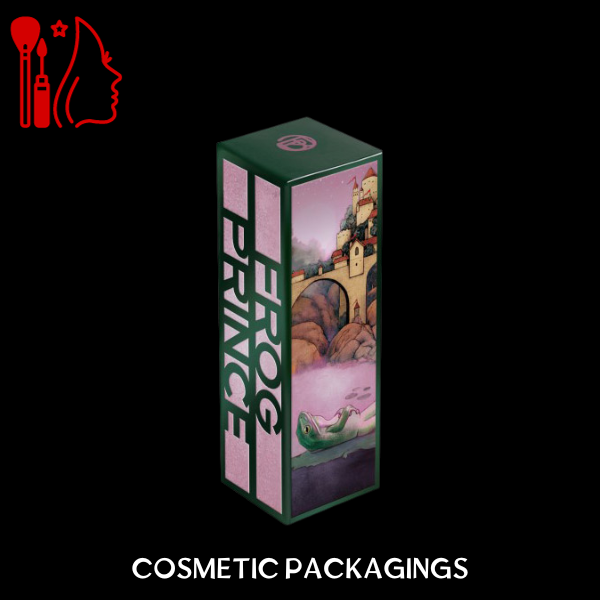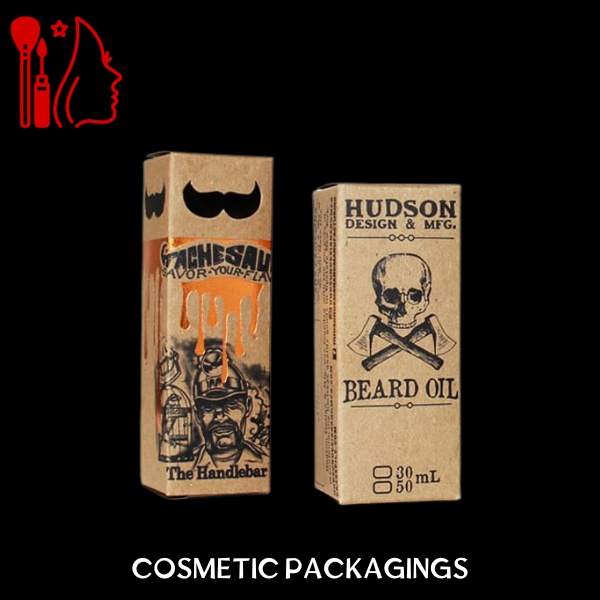
In the ever-evolving world of beauty and cosmetics, packaging plays a pivotal role in attracting customers and establishing brand identity. For small businesses in the cosmetic industry, creating a lasting impression through thoughtful and appealing packaging is crucial. This article explores the importance of cosmetic packaging for small businesses, providing insights into design, materials, and sustainability.
The Power of First Impressions
Capturing Attention on the Shelves
In a saturated market, cosmetic products vie for consumer attention on crowded shelves. Packaging serves as the first point of contact, making it essential for small businesses to invest in eye-catching designs. Vibrant colors, innovative shapes, and unique textures can set your product apart and pique the interest of potential customers.
Reflecting Brand Identity
The packaging is not just a protective layer; it is an extension of your brand. Small businesses should leverage packaging as a tool to communicate their brand values and personality. Whether it's a minimalist design that exudes sophistication or bold, vibrant colors that scream creativity, the packaging should reflect the essence of the brand.
Designing for Success
Understanding Target Audience
Before delving into the design process, small businesses must have a clear understanding of their target audience. Different demographics respond to various aesthetics and styles. Tailoring your packaging design to resonate with your ideal customers increases the likelihood of capturing their attention and fostering brand loyalty.
Consistency Across Product Lines
For small businesses with multiple products, maintaining a consistent design theme across different items can contribute to brand recognition. A cohesive packaging design creates a unified brand image, making it easier for customers to identify and trust your products.
Choosing the Right Materials
Balancing Aesthetics and Functionality
Selecting the right packaging material is a delicate balance between aesthetics and functionality. The material should complement the product inside while providing adequate protection. Glass, plastic, and sustainable materials each have their advantages, and the choice depends on factors such as the product's nature, target market, and environmental considerations.
Sustainable Packaging Solutions
In an era of increasing environmental consciousness, small businesses can gain a competitive edge by embracing sustainable packaging solutions. Biodegradable materials, eco-friendly inks, and minimalist designs that reduce waste can appeal to environmentally conscious consumers. Implementing sustainable practices not only contributes to a positive brand image but also aligns with global efforts towards eco-friendly business practices.
Leveraging Technology in Packaging
Augmented Reality (AR) in Cosmetic Packaging
Small businesses can leverage technology to enhance the customer experience through augmented reality (AR). AR-enabled packaging allows customers to virtually try out products, visualize different color options, or access additional information through their smartphones. This interactive approach not only engages customers but also adds a modern and tech-savvy touch to your brand.
QR Codes and Interactive Packaging
Integrating QR codes on cosmetic packaging provides an avenue for small businesses to connect with consumers directly. These codes can link to instructional videos, product information, or exclusive online content, fostering a sense of community and engagement. Interactive packaging creates a memorable and interactive brand experience, making customers feel more connected to the product and the brand.
Navigating Regulations and Compliance
Legal Considerations in Cosmetic Packaging
Small businesses must navigate a complex landscape of regulations and compliance when it comes to cosmetic packaging. Understanding labeling requirements, ingredient disclosures, and adherence to safety standards is paramount. Failure to comply with these regulations not only jeopardizes the brand but can also lead to legal consequences. Seeking professional advice or consulting with regulatory experts can help small businesses stay on the right side of the law.
Staying Informed About Industry Trends
The cosmetic industry is dynamic, with trends and consumer preferences constantly evolving. Small businesses must stay informed about the latest developments in packaging technology, design trends, and sustainable practices. Embracing innovation and staying ahead of the curve allows small businesses to adapt and thrive in a competitive market.
Case Studies Success Stories in Cosmetic Packaging for Small Businesses
Examining Notable Examples
Highlighting successful small businesses that have excelled in cosmetic packaging can provide valuable insights for others in the industry. Case studies can explore the strategies these businesses employed, the challenges they overcame, and the impact their packaging had on brand recognition and customer loyalty.
Conclusion
In conclusion, cosmetic packaging is more than just a protective layer; it's a powerful tool for small businesses to make a lasting impression, communicate brand identity, and connect with consumers. By understanding the target audience, embracing innovative designs and sustainable practices, and staying informed about industry trends, small businesses can elevate their brand through thoughtful and appealing cosmetic packaging. In a competitive market, the right packaging can be the key to standing out and building a loyal customer base.
Embracing Customization for Unique Branding
Tailoring Packaging to Your Brand Story
Customization is a powerful tool that allows small businesses to tell their unique brand story through packaging. Incorporating elements that resonate with the brand's origin, values, or founders can create a more personal connection with customers. Whether it's a symbol, a signature color, or a distinctive pattern, these customized touches contribute to a memorable and authentic brand experience.
Limited Edition Packaging for Special Campaigns
Introducing limited edition packaging for special campaigns, collaborations, or seasonal releases can create a sense of exclusivity and urgency among consumers. This strategy not only boosts sales during specific periods but also cultivates a collector's mentality, encouraging customers to engage with the brand regularly to acquire unique and limited-edition items.
Budget-Friendly Strategies for Small Businesses
Prioritizing Key Design Elements
While investing in high-quality packaging is crucial, small businesses should prioritize key design elements that align with their brand identity and target audience. This strategic approach ensures that resources are allocated efficiently, focusing on elements that have the most significant impact on consumer perception and brand recognition.
Utilizing Cost-Effective Materials
Small businesses can explore cost-effective packaging materials that align with their brand image and sustainability goals. For example, recycled cardboard or minimalistic designs can be both economical and environmentally friendly. Collaborating with local suppliers or manufacturers may also offer opportunities for cost savings and support for the community.
Consumer Feedback and Adaptability
Encouraging Customer Feedback
Small businesses can benefit significantly from actively seeking customer feedback on their packaging. Social media, surveys, and online reviews provide valuable insights into consumer preferences, allowing businesses to adapt and refine their packaging strategies based on real-time feedback. This iterative approach ensures that packaging remains relevant and resonates with the evolving preferences of the target audience.
Adapting to Market Trends
The cosmetic industry is known for its dynamic nature, with trends evolving rapidly. Small businesses should remain flexible and willing to adapt their packaging designs to align with current market trends. Staying attuned to popular colors, patterns, and packaging formats ensures that products remain visually appealing and competitive in the market.
Collaborative Opportunities for Small Businesses
Collaborating with Local Artists and Designers
Small businesses can explore collaborations with local artists or designers to infuse unique creativity into their packaging. These collaborations not only support the local creative community but also bring a fresh perspective to the brand. Customers often appreciate the authenticity and originality that such collaborations bring to the cosmetic products.
Networking within the Industry
Building connections within the cosmetic industry opens up opportunities for small businesses to collaborate with suppliers, manufacturers, or other brands. Joint ventures, co-branded packaging, or shared resources can provide cost-effective solutions and expand the reach of the brand. Networking also facilitates knowledge exchange and allows small businesses to stay informed about industry best practices.
Looking Ahead: Future Trends in Cosmetic Packaging
Innovations in Sustainable Packaging
As sustainability becomes a focal point for consumers, the cosmetic industry is likely to witness further innovations in sustainable packaging. Small businesses can explore biodegradable materials, compostable packaging, and circular economy principles to align with evolving environmental expectations.
Integration of Smart Packaging Technologies
The future of cosmetic packaging may see increased integration of smart technologies, such as RFID tags or NFC (Near Field Communication) labels. These technologies can provide consumers with real-time information, personalized recommendations, and interactive experiences, further enhancing the relationship between the brand and its customers.
Conclusion
In the competitive landscape of the cosmetic industry, small businesses can leverage the art of packaging to carve out a distinctive identity and foster a loyal customer base. By prioritizing design, materials, and sustainability, embracing technological advancements, staying compliant with regulations, and actively seeking customer feedback, small businesses can elevate their brand through thoughtful and strategic cosmetic packaging. As the industry continues to evolve, adaptability, innovation, and a commitment to customer satisfaction will be key factors in the success of small cosmetic businesses.
FAQs
1. Why is cosmetic packaging crucial for small businesses in the beauty industry?
Cosmetic packaging serves as the first point of contact between a product and a potential customer. For small businesses, it is a powerful tool to capture attention, communicate brand identity, and establish a lasting impression. The article discusses the significance of packaging in creating a distinct brand presence and attracting consumers in a competitive market.
2. How can small businesses balance aesthetics and functionality when choosing packaging materials?
Selecting the right packaging material involves finding a delicate balance between visual appeal and practical functionality. The article explores the considerations for small businesses, including the choice between glass, plastic, and sustainable materials, and emphasizes the importance of aligning the material with the product, target market, and environmental considerations.
3. How can technology, such as augmented reality and QR codes, be integrated into cosmetic packaging for small businesses?
Technological advancements offer small businesses innovative ways to engage with consumers through their packaging. The article delves into the use of augmented reality for virtual product trials, QR codes for interactive experiences, and other technologies that enhance the customer journey, providing a modern and tech-savvy touch to cosmetic packaging.
4. What legal considerations do small businesses need to be aware of in terms of cosmetic packaging?
Navigating legal aspects is crucial for small businesses in the cosmetic industry. The article highlights the importance of understanding labeling requirements, ingredient disclosures, and safety standards. It emphasizes the potential consequences of non-compliance and suggests seeking professional advice or consulting regulatory experts to ensure adherence to legal obligations.
5. How can small businesses implement cost-effective packaging strategies without compromising on quality?
Budget constraints are a common concern for small businesses. The article provides insights into prioritizing key design elements, utilizing cost-effective materials, and collaborating with local artists or designers to achieve unique and impactful packaging while staying within budget. It discusses practical approaches to maintain quality and visual appeal without overspending.


No comments yet